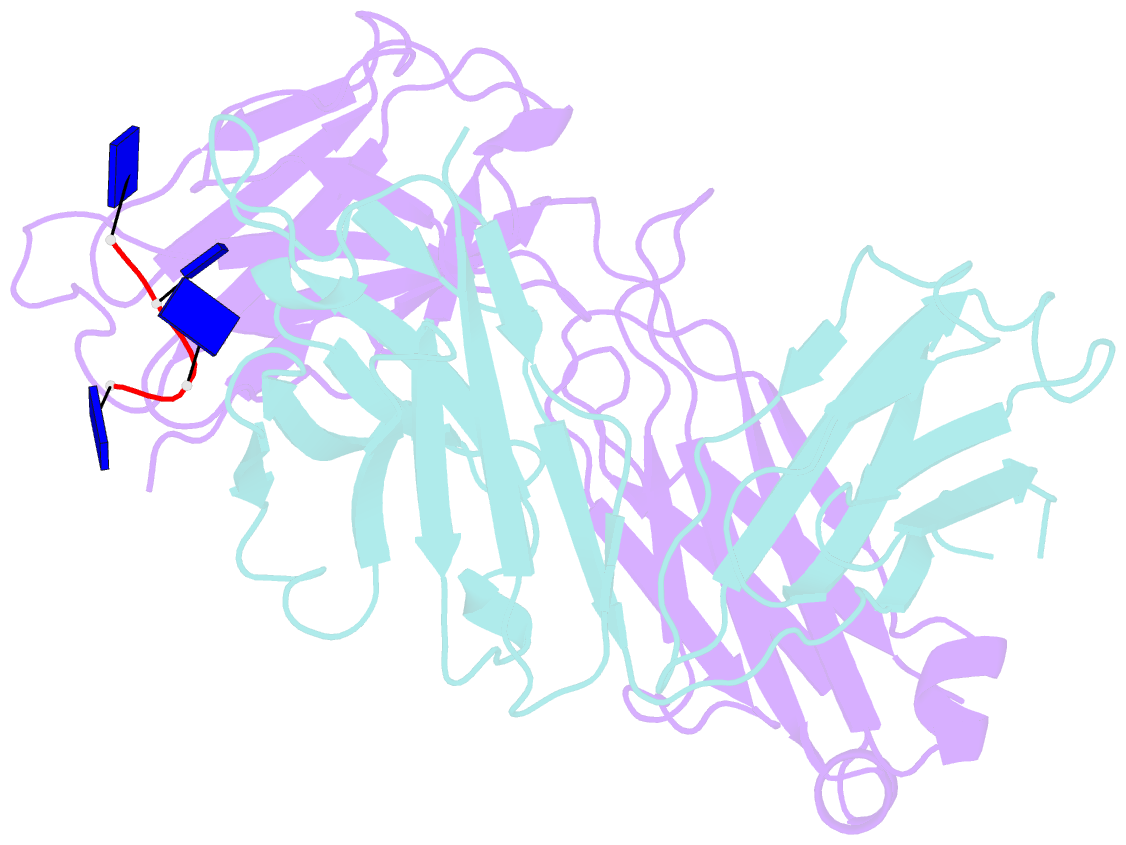Summary information and primary citation
- PDB-id
- 1keg; SNAP-derived features in text and JSON formats;
DNAproDB
- Class
- immune system-DNA
- Method
- X-ray (2.4 Å)
- Summary
- Antibody 64m-2 fab complexed with dtt(6-4)tt
- Reference
- Yokoyama H, Mizutani R, Satow Y, Sato K, Komatsu Y, Ohtsuka E, Nikaido O (2012): "Structure of the DNA (6-4) photoproduct dTT(6-4)TT in complex with the 64M-2 antibody Fab fragment implies increased antibody-binding affinity by the flanking nucleotides." Acta Crystallogr.,Sect.D, 68, 232-238. doi: 10.1107/S0907444912000327.
- Abstract
- Pyrimidine (6-4) pyrimidone DNA photoproducts produced by ultraviolet light are highly mutagenic and carcinogenic. The crystal structure of the dTT(6-4)TT photoproduct in complex with the Fab fragment of the antibody 64M-2 that is specific for (6-4) photoproducts was determined at 2.4 Å resolution. The dT(6-4)T segment is fully accommodated in the concave binding pocket of the Fab, as observed in the complex of dT(6-4)T with the Fab. The pyrimidine and pyrimidone bases of the dT(6-4)T segment are positioned nearly perpendicularly to each other. The thymidine segments flanking both ends extend away from the dT(6-4)T segment. The 5'-side thymine base is parallel to the side chain of Tyr100iH of the antibody heavy chain and is also involved in electrostatic interactions with Asn30L, Tyr32L and Lys50L of the antibody light chain. The 5'-side and 3'-side phosphate groups exhibit electrostatic interactions with Asn28L and Ser58H, respectively. These interactions with the flanking nucleotides explain why longer oligonucleotides containing dT(6-4)T segments in the centre show higher antibody-binding affinities than the dT(6-4)T ligand.





